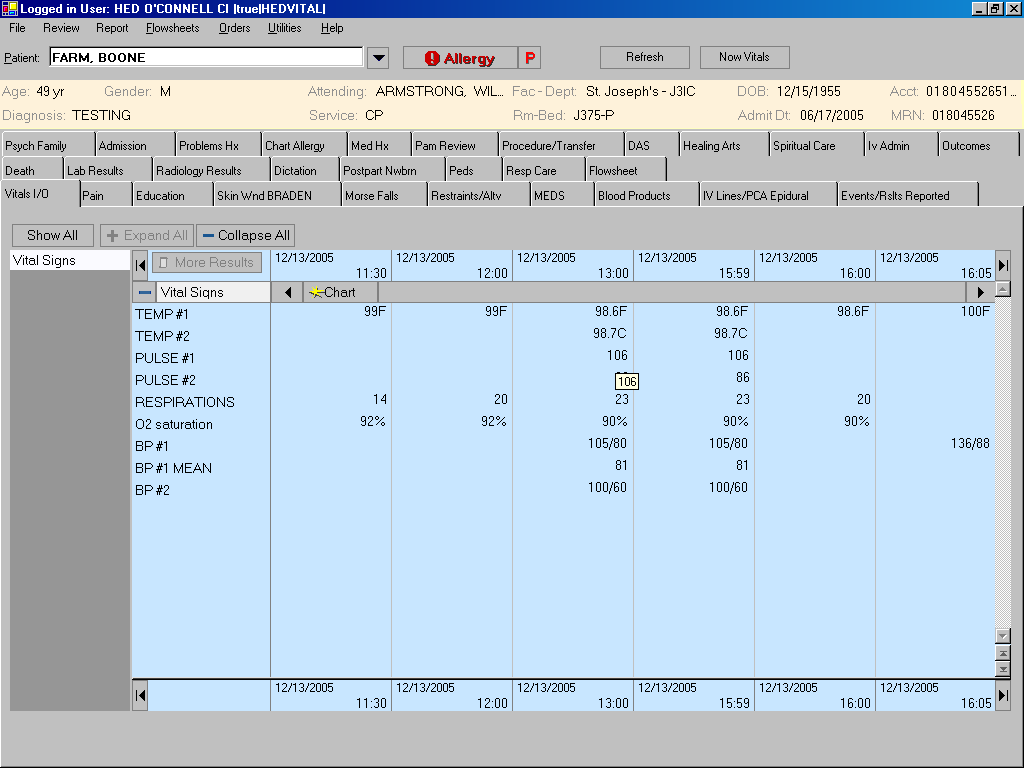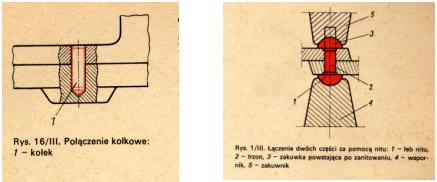MORSE FALLS SCALE ASSESSMENT SUBMITTED BY BETH ALLER RN
BEING AND DOING THE JUDICIAL USE OF REMORSE TOMORSE FALLS SCALE ASSESSMENT SUBMITTED BY BETH ALLER RN
MORSE FALLS SCALE ASSESSMENT:
MORSE FALLS SCALE ASSESSMENT
Submitted by Beth Aller RN, HE Clinical Education Manager and Falls Committee Member
Starting January 4th, an updated charting screen in Horizon Clinical Documentation will be the MORSE FALLS ASSESSMENT and REASSESSMENT.


How will the Morse Fall Scale be used?
According to the new HealthEast protocol for falls prevention, every patient will be assessed
On admission.
Daily on the day shift.
When a patient’s condition changes or there has been a change in the patient’s medication regimen that could put the patient at risk for a fall.
When a patient is transferred to another unit.
After a fall.
Why is this change in the HealthEast Falls Prevention Program being made at this time?
This change in patient care pertaining to falls assessment has come about at this time for several reasons.
Working toward the goals of the American Nurses Credentialing Center’s (ANCC) Magnet Recognition Program, HealthEast has chosen to participate in the National Database of Nursing Quality Indicators (NDNQI).
This change is also coming about because of the 2005 & 2006 JCAHO Patient Safety Goals pertaining to falls.
The 2005 goal states “Reduce the risk of patient harm resulting from falls. Assess and periodically reassess each patient’s risk for falling, including the potential risk associated with the patient’s medication regimen, and take action to address any identified risks.”
The 2006 goal states “Reduce the risk of patient harm resulting from falls. Implement a fall reduction program and evaluate the effectiveness of the program.
The most compelling reason of all for this change is that a recent study done by a HealthEast staff nurse in one of the HealthEast hospitals resulted in convincing data.
HealthEast hospitals need to improve the consistency of how falls are managed and evaluated.
Falls do happen in HealthEast hospitals and have produced serious injury.
Falls occur at all hours of the day and night; however, patients were most likely to fall during the nighttime hours.
Toileting issues were found to be the leading cause of falls in HealthEast hospitals.
As a result of this study, the HealthEast Nurse Practice Committee charged a group of nurses to look into the issue of falls. The HealthEast Falls Committee was formed to develop a nursing policy and procedure with the important purpose of creating a safe environment that protects patients from harm due to falls.
Procedure:
Obtain a Morse Fall Scale Score by using the variables and numeric values listed in the “Morse Fall Scale” table below. (Note: Each variable is given a score and the sum of the scores is the Morse Fall Scale Score. Do not omit or change any of the variables. Use only the numeric values listed for each variable. Making changes in this scale will result in a loss of validity. Descriptions of each variable and hints on how to score them are provided below.) The “Total” value obtained must be recorded in the patient’s medical record.
Morse Fall Scale
|
Variables |
Numeric Values |
Score |
|
1. History of falling |
No 0
Yes 25 |
_______ |
|
2. Secondary diagnosis |
No 0
Yes 15 |
_______ |
|
3. Ambulatory aid None/bed rest/nurse assist Crutches/cane/walker Furniture |
0 15 30 |
_______
|
|
4. IV or IV Access |
No 0
Yes 20 |
_______ |
|
5. Gait Normal/bed rest/wheelchair Weak Impaired
|
0 10 20 |
_______ |
|
6. Mental status Oriented to own ability Overestimates or forgets limitations |
0 15 |
_______
|
Morse Fall Scale Score = Total ______
Morse Fall Scale Variable Descriptions and Scoring Hints
History of falling
This is scored as 25 if the patient has fallen during the present hospital admission or if there was an immediate history of physiological falls, such as from seizures or an impaired gait prior to admission. If the patient has not fallen, this is scored 0. Note: If a patient falls for the first time, then his or her score immediately increases by 25.
Secondary diagnosis
This is scored as 15 if more than one medical diagnosis is listed on the patient’s chart; if not, score 0.
Ambulatory aid
This is scored as 0 if the patient walks without a walking aid (even if assisted by a nurse), uses a wheelchair, or is on bed rest and does not get out of bed at all. If the patient uses crutches, a cane, or a walker, this variable scores 15; if the patient ambulates clutching onto the furniture for support, score this variable 30.
IV or IV Access
This is scored as 20 if the patient has an intravenous apparatus or a saline/heparin lock inserted; if not, score 0.
Gait
The characteristics of the three types of gait are evident regardless of the type of physical disability or underlying cause.
A normal gait is characterized by the patient walking with head erect, arms swinging freely at the side, and striding without hesitation. This gait scores 0.
With a weak gait (score10), the patient is stooped but is able to lift the head while walking without losing balance. If support from furniture is required, this is with a featherweight touch almost for reassurance, rather than grabbing to remain upright. Steps are short and the patient may shuffle.
With an impaired gait (score 20), the patient may have difficulty rising from the chair, attempting to get up by pushing on the arms of the chair and/or bouncing (i.e., by using several attempts to rise). The patient’s head is down, and he or she watches the ground. Because the patient’s balance is poor, the patient grasps onto the furniture, a support person, or a walking aid for support and cannot walk without this assistance. Steps are short and the patient shuffles.
If the patient is in a wheelchair, the patient is scored according to the gait he or she used when transferring from the wheelchair to the bed.
Mental status
When using this Scale, mental status is measured by checking the patient’s own self-assessment of his or her own ability to ambulate. Ask the patient, “Are you able to go to the bathroom alone or do you need assistance?” If the patient’s reply judging his or her own ability is consistent with the activity order on the Kardex, the patient is rated as “normal” and scored 0. If the patient’s response is not consistent with the activity order or if the patient’s response is unrealistic, then the patient is considered to overestimate his or her own abilities and to be forgetful of limitations and is scored as 15.

Fall Risk
Use the Morse Fall Scale Score to see if the patient is in the low, medium or high risk level. (See the “Fall Risk Level” table below to determine the level and the action to be taken.)
Implement the interventions that correspond with the patient’s fall risk level. (See “Fall Risk Prevention Interventions” below.)
Use the Morse Fall Scale Score to see if the patient is in the low, medium or high risk level. (See the “Fall Risk Level” table below to determine the level and the action to be taken.)
Level
|
Risk Level |
Morse Fall Scale Score |
Action |
|
Low Risk |
0 – 24 |
Implement Low Risk Fall Prevention Interventions |
|
Medium Risk |
25 – 44 |
Implement Medium Risk Fall Prevention Interventions |
|
High Risk |
45 and higher |
Implement High Risk Fall Prevention Interventions |

Intervention: Score:
|
0-24 (low risk) |
25-44 (medium risk) |
45-100 (high risk) |
|
1. All Admitted Patient Implement low risk interventions for all hospitalized patients. |
yes |
no |
no |
|
2. Communication Orient patient to surroundings and hospital routines Very important to point out location of the bathroom If patient is confused, orientation is an ongoing process Call light in easy reach – make sure patient is able to use it Instruct patient to call for help before getting out of bed. |
yes |
yes |
yes |
|
Patient/Family Education Verbally inform patient and family of fall prevention interventions. |
yes |
yes |
yes |
|
Shift Report Communicate the patient’s “at risk” status. |
yes |
yes |
yes |
|
Plan of Care Collaborate with multi-disciplinary team members in planning care. Healthcare team should tailor patient-specific prevention strategies. It is inadequate to write “Fall Precautions”. |
yes |
yes |
yes |
|
Post a “Falls Program” sign at the entrance to the patient’s room. (Exception: Bethesda Behavioral units will not use the sign because of patient/staff safety concerns.) |
prn |
yes |
yes |
|
Make “comfort” rounds every 2 hours and include change in position, toileting, offer fluids and ensure that patient is warm and dry. |
prn |
yes |
yes |
|
Consider obtaining physician order for Physical Therapy consult.* |
prn |
prn |
yes* |
|
3. Toileting Implement bowel and bladder program. |
yes |
yes |
yes |
|
Discuss needs with patient. |
yes |
yes |
yes |
|
Provide a commode at bedside (if appropriate). |
prn |
prn |
yes |
|
Urinal/bedpan should be within easy reach (if appropriate). |
prn |
prn |
yes |
|
4. Medicating Evaluate medications for potential side effects. |
yes |
yes |
yes |
|
Consider peak effect that affects level of consciousness, gait and elimination when planning patient’s care. |
yes |
yes |
yes |
|
Consider having a Pharmacist review medications and supplements to evaluate medication regimen to promote the reduction of fall risk. |
prn |
prn |
yes |
|
5. Environment Bed Low position with brakes locked, document number of side rails. |
yes |
yes |
yes |
|
Bedside stand/bedside table Personal belongings within reach. |
yes |
yes |
yes |
|
Room “clutter” - Remove unnecessary equipment and furniture Ensure pathway to the bathroom is free of obstacles and is lighted. Consider placing patient in the bed that is close to the bathroom. |
yes |
yes |
yes |
|
Use a night light as appropriate. |
prn |
yes |
yes |
|
6. Safety Nonskid (non-slip) footwear. |
yes |
yes |
yes |
|
Do not leave patients unattended in diagnostic or treatment areas. |
prn |
yes |
yes |
|
Consider placing the patient in a room near the nursing station, for close observation, especially for the first 24–48 hours of admission. |
prn |
prn |
yes |
|
Consider patient safety alarm (tab alarm &/or pressure sensor alarm). Communicate the frequency of alarms each shift. |
prn |
prn |
yes |
|
If appropriate, consider using protection devices: hip protectors, a bedside mat, a “low bed” or a helmet. |
prn |
prn |
yes |
|
If “Fall Risk Prevention Interventions” have been initiated and are unsuccessful, refer to HENSA Policy R-3 “Use of Restraint and Seclusion”.* |
prn |
prn |
yes* |
Tags: aller rn,, aller, falls, assessment, submitted, scale, morse
- UNIVERSIDAD DEL MAGDALENA ESPECIALIZACIÓN EN LOGÍSTICA Y TRANSPORTE INTERNACIONAL
- NOMBRE DE LA EMOCIÓN IRARABIA ACTIVIDADES SESIÓN 1º ¿QUÉ
- ZAŁĄCZNIK NR 1 SPECYFIKACJA STRONY INTERNETOWEJ OPIS PRZEDMIOTU ZAMÓWIENIA
- BRAZILIAN SOIL SCIENCE ACTIVITIES IN ANTARCTICA STARTED IN 2002
- TÉCNICO SUPERIOR UNIVERSITARIO EN ACUICULTURA ÁREA ADMINISTRACIÓN Y EVALUACIÓN
- CONSTRUCTION TRAINERS TRAINING – CT TRAIN PUITMAJADE TOOTMINE LÄTIS
- INFORME DE COMPETENCIA CURRICULAR LENGUA CASTELLANA Y LITERATURA CURSO
- ŒECTUZOU VHEGT (201718) FUGT LJBT RJMG MKÔFÐU„BT
- SKIP TO MAIN CONTENT MAIN MENU SUB MENU
- 12 CULTURA OFICIAL CULTURA POPULAR Y CULTURA ILUSTRADA EN
- KONTROLSKEMA AUTORISEREDE ARBEJDSMILJØRÅDGIVERE (RÅDGIVNINGSVIRKSOMHEDER) SKEMAET VEDLÆGGES SOM FORSIDE
- KVIK ONLINE ELŐBESOROLÁS KVIKOEP [612E] ONLINE ELŐBESOROLÁS
- CONTRADICCIÓN DE TESIS 4462013 CONTRADICCIÓN DE TESIS 4462013 SUSCITADA
- ESPOL ICQA EVALUACIÓN FINAL SOBRE EL COMPONENTE
- KEMENTERIAN PENDIDIKAN DAN KEBUDAYAAN UNIVERSITAS SUMATERA UTARA FAKULTAS TEKNIK
- ANÁLISIS DEL MERCADO EDITORIAL EN ESPAÑA COMERCIO INTERIOR Y
- APR 23 2020 INV050 (USAIDTITLE II) WBSCM FREIGHT
- ŞCOALA GIMNAZIALĂ “GEORGE CĂLINESCU” IAŞI ÎNSCRIERI LA CLASA
- WYMAGANIA EDUKACYJNE – PRZYRODA KLASA IV SZKOŁY PODSTAWOWEJ WYMAGANIA
- SEND INFORMATION ADVICE SUPPORT SERVICE SCHOOL ALLOCATION LIST FOR
- POLITECHNIKA WROCŁAWSKA WYDZIAŁ CHEMICZNY ZAKŁAD MATERIAŁÓW POLIMEROWYCH I WĘGLOWYCH
- PERCORSO DI LAVORO DELL’INSEGNANTE DI SOSTEGNO NELLA SCUOLA DELL’INFANZIA
- ŠTEVILKA 6020120191 DATUM 08012019 VVZ KEKEC GROSUPLJE VABI K
- ELEMENTS AND BONDING WORKSHEET 1 CLASSIFY EACH OF THE
- LE COMMENTAIRE COMPOSÉ LE COMMENTAIRE COMPOSÉ PORTE SUR
- UPDATED CHECKLIST FOR ADMINISTRATIVE AND EMERGENCY PROCEDURES DIRECTIONS FOR
- CERTIFICATE OF EMPLOYMENT FOR DESIGNATED CERTIFIED INDIVIDUALS SUBSURFACE SEWAGE
- SØKNAD TIL BIOINGENIØRFAGLIG INSTITUTTS STUDIEFOND ADR NITO POSTBOKS 9100
- SZEMÉLY VAGYONVÉDELMI ÉS MAGÁNNYOMOZÓI SZAKMAI KAMARA SPORTRENDEZVÉNYBIZTOSÍTÁS VIZSGASZABÁLYZATA A
- 11 APPROVED BY ORDER NO A760 OF THE RECTOR
FRANCI JUST IZDELANO V LITERARNEM LABORATORIJU FERIJA LAINŠČKA PO
 PROGRAMA CURSO ALICANTE DEL 15 AL 19 DE OCTUBRE
PROGRAMA CURSO ALICANTE DEL 15 AL 19 DE OCTUBRE DEPARTAMENTO DE ESTADISTICA Y REGISTROS DER08 DER08 FORMULARIO PARA
DEPARTAMENTO DE ESTADISTICA Y REGISTROS DER08 DER08 FORMULARIO PARACATEGORIA ALEVIN CLARA SANCHEZ ASENSIO ALEVIN ARO CDR VALLISOLETANA
BASES LICITACIÓN “ESTUDIO POTENCIALIDAD DE PRODUCIÓN DE BIOGÁS PARA
CÓDIGO CAR DENOMINACIÓN DE PRODUCTO Nº DE UNIDADES
LEY 531984 DE 26 DE DICIEMBRE DE INCOMPATIBILIDADES DEL
SF ARCATIM SA TIMIŞOARA STR LOUIS PASTEUR NR 2
 PRESS RELEASE VITA DISC® VITA EXTENDS THEIR PRODUCT PORTFOLIO
PRESS RELEASE VITA DISC® VITA EXTENDS THEIR PRODUCT PORTFOLIO EC12GC19 PÁGINA 21 NACIONES UNIDAS E CONSEJO ECONÓMICO Y
EC12GC19 PÁGINA 21 NACIONES UNIDAS E CONSEJO ECONÓMICO Y ARTIST’S PROJECT BRIEF FOR FRESH ART WARD 4
ARTIST’S PROJECT BRIEF FOR FRESH ART WARD 4MEDICATION AUTHORITY FORM FOR A STUDENT WHO REQUIRES
COPYRIGHT 2018 AIA MASTERSPEC FULL LENGTH 0918 (PM UPDATED
PRINCIPIO DEL FORMULARIO NOMBRE LEY DE ÉTICA GUBERNAMENTAL COMENTARIOS
 TEMAT KLASYFIKACJA I NORMALIZACJA CZĘŚCI MASZYN W TECHNICE
TEMAT KLASYFIKACJA I NORMALIZACJA CZĘŚCI MASZYN W TECHNICEE0301650 EXTENDED BENEFITS FOR NONMINORS LIVING WITH CURRENT OR
682198DOC P 3 READER 05 KWALITEITSCRITERIA TOETSEN BKO BASISKWALIFICATIE
 NÚM 53 JUEVES 15 DE MARZO DE 2011 I
NÚM 53 JUEVES 15 DE MARZO DE 2011 IPUBLIC ADDRESS ANNOUNCEMENTS TEST ATTENTION PLEASE FOR THE NEXT
SPETTLE COMUNE DI PISA UFFICIO MESSI COMUNALI PEC COMUNEPISAPOSTACERTTOSCANAIT